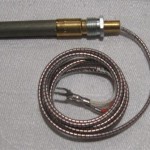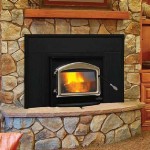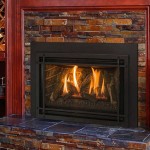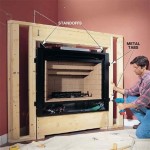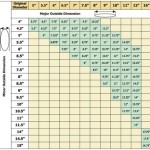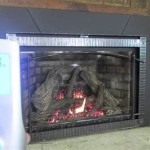Lennox Fireplace Replacement Glass: A Comprehensive Guide
Lennox fireplaces are recognized for their quality, efficiency, and aesthetic appeal. However, like any appliance containing glass, the glass panel in a Lennox fireplace can be susceptible to damage, whether through accidental impact, thermal stress, or general wear and tear over time. When the glass breaks or becomes significantly damaged, replacement is crucial for maintaining the fireplace's functionality, safety, and overall appearance. This article provides a detailed overview of Lennox fireplace replacement glass, covering types, selection, installation, and maintenance.
Understanding Fireplace Glass and Its Importance
Fireplace glass is not ordinary glass. It is specially manufactured to withstand the high temperatures generated within a fireplace. Typically, fireplace glass is either ceramic glass or tempered glass. Ceramic glass, such as Pyroceram or Neoceram, is the preferred choice for most gas and wood-burning fireplaces due to its exceptional heat resistance and ability to withstand thermal shock. Tempered glass, while more affordable, is primarily used in decorative gas fireplaces where temperatures are lower. The type of glass used in a Lennox fireplace is critical to ensuring safety and proper operation.
The integrity of the fireplace glass is vital for several reasons. Broken or cracked glass can allow carbon monoxide, a poisonous gas, to leak into the home. It also compromises the fireplace's efficiency, allowing heat to escape and potentially creating a fire hazard. Furthermore, damaged glass detracts from the aesthetic appeal of the fireplace, reducing its value as a focal point in the room. Therefore, prompt replacement of damaged Lennox fireplace glass is essential.
Identifying the specific type of glass used in a Lennox fireplace is the first step in the replacement process. The user manual typically provides this information. If the manual is unavailable, contacting a Lennox dealer or a qualified fireplace technician can provide the necessary details. Using the incorrect type of glass can lead to hazardous situations and void any warranties associated with the fireplace.
Selecting the Correct Replacement Glass for Your Lennox Fireplace
Choosing the correct replacement glass for a Lennox fireplace involves several key considerations, ensuring both safety and optimal performance. The primary factors include the type of glass, dimensions, thickness, and any special coatings or features.
As mentioned earlier, ceramic glass is the preferred material for most Lennox fireplaces due to its superior heat resistance. When ordering replacement glass, specifying ceramic glass is crucial. The specific type of ceramic glass (e.g., Pyroceram, Neoceram) might be indicated in the original specifications of the fireplace. If unsure, consulting with a Lennox dealer or fireplace professional is recommended.
Accurate dimensions are paramount. Measure the existing glass panel precisely, noting the length, width, and thickness. It is often best to provide these measurements to the glass supplier in millimeters to ensure the highest degree of accuracy. Slight variations in size can prevent the glass from fitting properly within the fireplace frame, compromising safety and efficiency. Some Lennox fireplace models have curved or uniquely shaped glass panels. Replicating these shapes precisely is essential for a proper fit. Often, a template of the existing glass must be provided to the glass supplier to ensure accurate replication. This template can be created by tracing the outline of the broken glass onto a piece of cardboard or paper.
The thickness of the replacement glass should match the original specifications. Using glass that is too thin can compromise its structural integrity under high temperatures, while glass that is too thick might not fit properly within the frame. The standard thickness for fireplace glass typically ranges from 3/16 inch to 1/4 inch, but it's essential to confirm the exact requirement for the specific Lennox fireplace model.
Some Lennox fireplaces feature glass with special coatings, such as reflective or tinted coatings, for aesthetic purposes or to enhance heat reflection. If the original glass had such a coating, specifying the same coating for the replacement glass is important to maintain the fireplace's original appearance and performance. These coatings are typically applied during the manufacturing process, and attempting to apply them after the glass is cut is generally not feasible. It is recommended to purchase coated glass from a reputable supplier that specializes in fireplace glass.
When sourcing replacement glass, consider purchasing from reputable suppliers that specialize in fireplace glass or are authorized Lennox dealers. These suppliers typically offer high-quality glass that meets or exceeds industry standards. Purchasing from unreliable sources can result in receiving glass that is not properly tempered or ceramic, which can pose a significant safety hazard.
The Process of Replacing Lennox Fireplace Glass
Replacing Lennox fireplace glass is a task that requires caution and attention to detail. While some homeowners may feel comfortable undertaking this project themselves, it is generally recommended to hire a qualified fireplace technician. Improper installation can compromise the safety and efficiency of the fireplace. Regardless of who performs the replacement, safety precautions must be followed scrupulously.
Before beginning the replacement process, ensure the fireplace is completely cool. Working on a hot fireplace can result in burns or other injuries. Turn off the gas supply to the fireplace if it is a gas-burning model, or ensure the fire is completely extinguished in a wood-burning fireplace. Gather the necessary tools and materials, including a screwdriver (typically a Phillips head), pliers, work gloves, safety glasses, and the new replacement glass.
The first step involves removing the existing glass panel. Most Lennox fireplaces have a frame or door that holds the glass in place. This frame is typically secured with screws or clips. Carefully remove the screws or clips, taking note of their location and orientation. Some frames may require gentle prying to release them. Once the frame is loose, carefully remove it and set it aside.
With the frame removed, the broken or damaged glass can be removed. Wear work gloves and safety glasses to protect against sharp edges or splinters. Carefully lift the glass panel out of the fireplace, taking care not to scratch or damage the surrounding surfaces. Dispose of the broken glass properly, wrapping it securely in cardboard or newspaper to prevent injuries. Some municipalities have specific regulations regarding the disposal of broken glass, so it's important to check local guidelines.
Before installing the new glass, thoroughly clean the fireplace frame and the surrounding area. Remove any debris, soot, or residue that may have accumulated. Inspect the frame for any damage or wear, and repair or replace it if necessary. This cleaning process ensures a clean and secure fit for the new glass panel.
Carefully insert the new replacement glass into the frame. Ensure that it is properly aligned and seated within the frame. If the glass has a specific orientation (e.g., a coated side), ensure it is installed correctly. Secure the frame back onto the fireplace, using the screws or clips that were removed earlier. Tighten the screws or clips snugly, but avoid over-tightening, which can crack the glass. Double-check that the frame is securely attached and that the glass is properly sealed.
After installing the new glass, perform a test run of the fireplace to ensure that it is functioning properly. For gas fireplaces, check for any gas leaks around the glass panel. Use a gas leak detector or a soapy water solution to identify any leaks. If a leak is detected, turn off the gas supply immediately and contact a qualified gas technician. For wood-burning fireplaces, observe the glass panel during the first fire to ensure that it is withstanding the heat properly. Listen for any unusual noises, such as cracking or popping, which could indicate a problem with the glass.
Maintaining Lennox Fireplace Glass for Longevity
Proper maintenance of Lennox fireplace glass can significantly extend its lifespan and maintain its clarity and appearance. Regular cleaning and inspection can prevent damage and ensure optimal performance. The frequency of cleaning depends on the usage of the fireplace, but generally, cleaning the glass every few weeks during the heating season is recommended.
The primary method of cleaning fireplace glass is using a specialized fireplace glass cleaner. These cleaners are formulated to remove soot, creosote, and other deposits without damaging the glass. Avoid using household cleaners, such as ammonia-based products, as they can etch or damage the glass. A simple solution of vinegar and water can also be effective for light cleaning, but it's essential to avoid getting the solution on the surrounding metal or brickwork.
To clean the glass, first, ensure the fireplace is completely cool. Spray the glass cleaner onto a soft cloth or paper towel and gently wipe the glass. Avoid using abrasive materials, such as steel wool or scouring pads, as they can scratch the glass. For stubborn deposits, allow the cleaner to sit on the glass for a few minutes before wiping it off. Rinse the glass with clean water and dry it with a clean cloth to remove any residue.
Regular inspection of the fireplace glass is crucial for identifying potential problems early on. Look for cracks, chips, or other signs of damage. Even small cracks can weaken the glass and eventually lead to complete failure. Inspect the seals around the glass to ensure they are intact and preventing air leaks. Damaged or deteriorated seals should be replaced promptly.
Proper fireplace operation is also essential for maintaining the longevity of the glass. Avoid overloading the fireplace with wood, as this can generate excessive heat and stress the glass. Ensure that the fireplace is properly ventilated to prevent the buildup of creosote and other deposits. Regular chimney cleaning is also important for maintaining proper ventilation and preventing chimney fires.
If the fireplace is not in use for an extended period, such as during the summer months, consider covering the glass with a protective cloth to prevent dust and scratches. Store the fireplace in a dry and well-ventilated area to prevent moisture damage. Following these maintenance tips can help to keep the Lennox fireplace glass in good condition and extend its lifespan.

A Plus Inc Lennox Edv3530 Replacement Parts Accessories

Lennox Replacement Glass Doors Fireplace Door Makeover

Lennox Fireplace Doors Brick Anew Free

How To Replace Your Gas Fireplace Glass

Fireplace Glass Doors Stock Zero Clearance Z Decor Lennox And Superior Thermo Rite Door Su28

Glass Fireplace Doors Replacement Guaranteed Fit Brick Anew

Basic Home Improvements How Do You Open A Fireplace Damper

Replacement Glass Doors For Heatilator Fireplaces Safety

How To Turn On Off The Lennox Fireplace

Lennox Visions Elite Series Direct Vent Freestanding Stove
Related Posts


